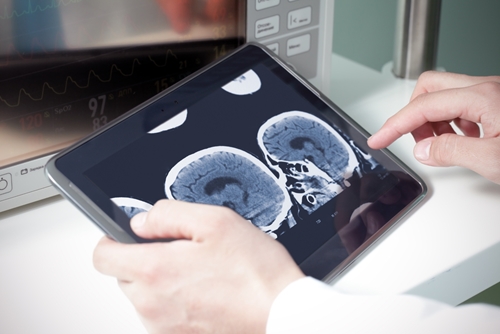How to Overcome Radiologist Burnout

Workplace burnout is a common phenomenon among medical physicians and clinicians, and radiologists are no exception. Due to feelings of depersonalization, emotional exhaustion or a perceived lack of accomplishment, there are many ways workplace stress can take a toll on radiologists. Another factor weighing on radiologists is the disconnect between their ambition and their reality.
How Common is Radiologist Burnout?
Recent research indicates physician burnout has reached a critical level in the U.S. The Medscape Lifestyle Report 2016: Bias and Burnout revealed that burnout increased across the board for all physicians, with the percentage of respondents reporting at least one burnout symptom increasing from 45.5 percent to 54.4 percent between 2011 and 2014.
At 50 percent, radiologists placed tenth for which physicians are the most burned out. These specialists only trail the top three classes – critical care, urology and emergency medicine – by 5 percentage points, indicating there’s only a slight difference between the two. Radiologists ranked tenth on burnout severity, placing theirs at 4.7 on a scale of 1 to 7.
“Radiologists placed tenth for the most-burnt out physicians.”
However, this research treats radiologists as a single monolithic entity. To investigate the situation at a more granular level, researchers at the University of Washington focused on the prevalence of burnout among just a single subgroup of musculoskeletal radiologists, AuntMinnie reported. Their research discovered that 80 percent of this subgroup experienced burnout.
Based on the Maslach Burnout Inventory that breaks down this job-related psychological syndrome into three aspects – emotional exhaustion, depersonalization and personal accomplishment – the researchers found emotional exhaustion the most prevalent with 61.7 percent of respondents saying they experienced it.
Reigniting the Flame
If left untreated, radiologist burnout will take a toll on both the staff member and the facility, as productivity drops and the potential for errors increases. Since burnout is a work-related stressor, facility supervisors should address this problem at the job.
A major factor driving depersonalization in radiology facilities arises from staff having to interface primarily through equipment and computers as this job requires long days of independent and often isolated work, noted KevinMD.
One way to alleviate the potential for workplace burnout for radiologists is by utilizing more efficient and effective communication methods between staff and equipment, such as using picture archiving and communication systems with speech recognition. The ability to use speech recognition software makes system interfaces more agreeable and easier to use for radiologists.
Talking aloud to dictate diagnostic reports for automated transcriptions allows radiologists to communicate normally, as if they’re speaking to a colleague. With greater ease of communication, work flows more efficiently through the organization.
More socialization via an interactive PACS that recognizes and transcribes radiologists vocal communications makes staff more engaged with their work. Not only does the right PACS reduce the chances for depersonalization and subsequent burnout among radiologists, it can also boost productivity through more streamlined collaboration among staff and equipment.
Click here to learn more about Aspyra’s PACS solution.
